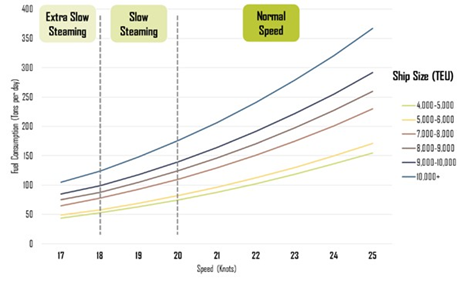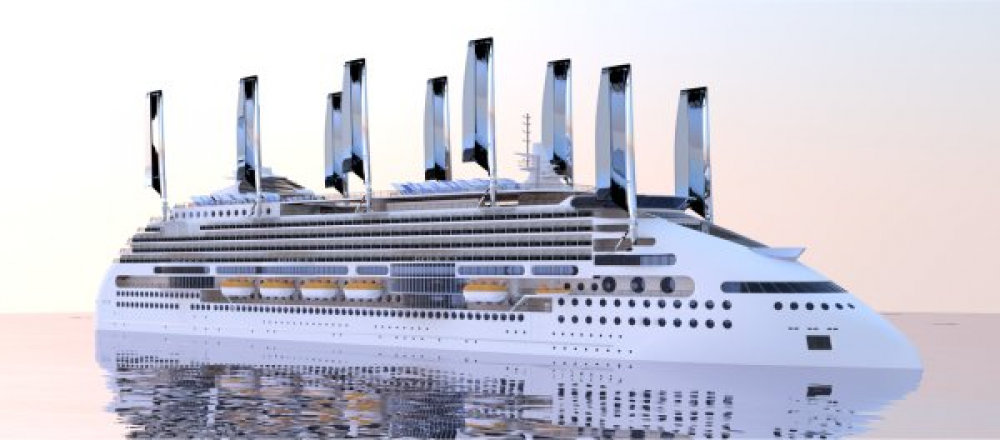
Figure 1: Cruise ship passenger volume from 1990 to 2020 (Cruise Market Watch, 2017).
The global cruise ship industry is growing faster than the rest of tourism. For over 20 years, the average annual passenger growth rate has been about 7% (Florida-Caribbean Cruise Association, 2015). The year 2016 saw 23 million passengers globally, most of whom were from North America. Cruise Market Watch provides some forecasts for the years to come, indicating further rapid expansion of this industry (Figure 1).
Cruise ships require a lot of energy, both for moving through water and for ancillary services (i.e. generators for electricity to deliver on-board services). Even highly efficient propulsion systems, such as the one used in the Freedom of the Seas, burn about 4,200 litres of fuel per hour. Fuel burn depends on speed and ship size, with larger ships consuming more (Figure 2).

Figure 2: Fuel burn for different sized cruise ships and different speeds (Cruisemapper, 2017).
Not surprisingly, the increasing impact of the global cruise ship industry on the climate is of concern. However, it is challenging to even broadly track the trend of cruise ship greenhouse gas emissions, partly because emissions from international shipping (and aviation) are not captured in national greenhouse gas accounts or obligations through the Paris Agreement.
At this point we therefore rely on voluntary reporting of greenhouse gas emissions by cruise ship. In a recent study of 50 cruise companies, de Grosbois (2016) found that Corporate Social Responsibility reporting was generally poor. However, the two major large corporations, Carnival Corporation and Royal Caribbean Cruises Ltd, provide sufficient information in their Sustainability reports to estimate total emissions.
The Global Sustainable Tourism Dashboard visualises the carbon dioxide emissions from the above cruise ship companies and estimates the remainder based on market share. In 2015, for example, cruise ships emitted about 19,106 kilo-tonnes of CO2-equivalent; this represents about 0.2% of global emissions from fossil fuel consumption and cement production. The average cruise ship passenger emitted 0.83 tonnes of CO2-equivalent just for their cruise. Most packages would also include some air travel to the port of embarkation and back home, adding to the overall footprint.
Given the carbon intensity of cruise ship tourism, and continuous growth rates, it is critical to rapidly invest into new energy systems. Improving engine efficiency is a first step, but decarbonising can only come from more investment into renewable energy technologies. An example is the Japan-based Ecoship Project (see photo above). In addition, and whilst only buying time, the cruise ship industry might follow aviation and consider a financial contribution to global climate mitigation by buying carbon offsets.
Written by Susanne Becken, Professor of Sustainable Tourism, Griffith University
